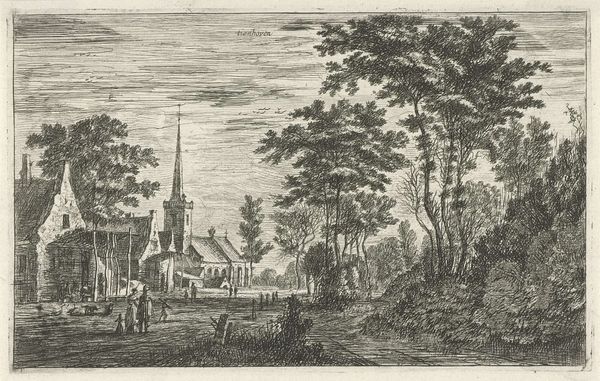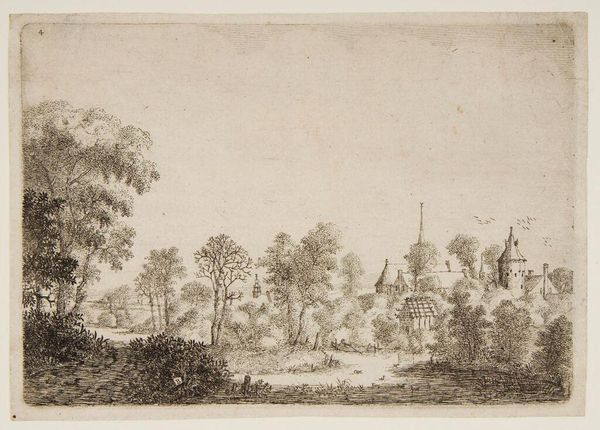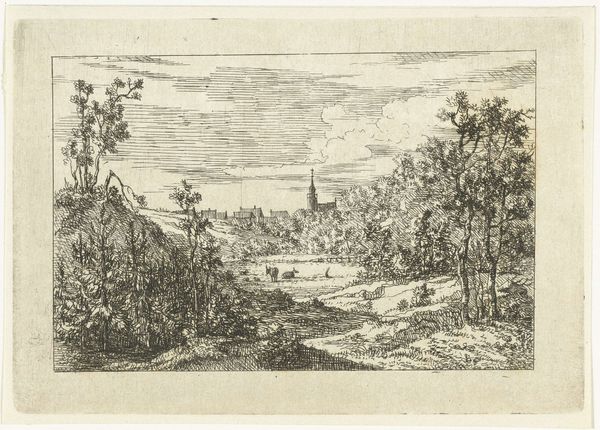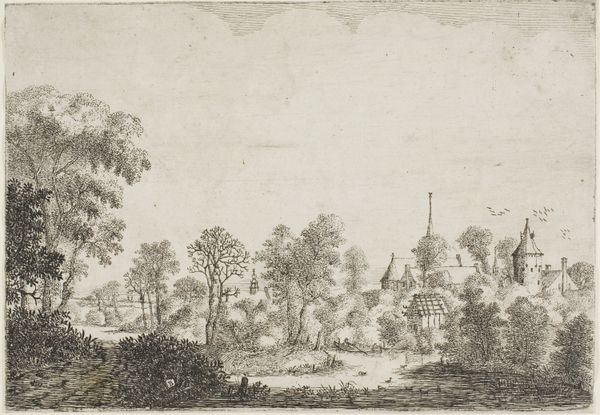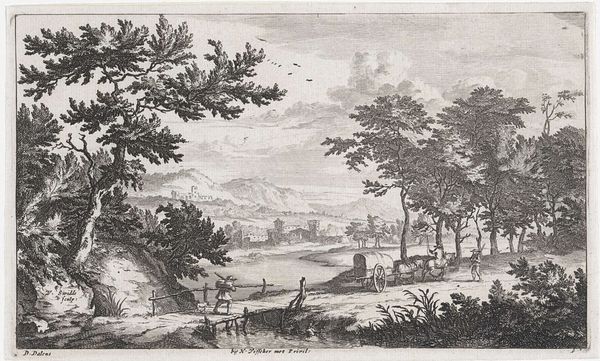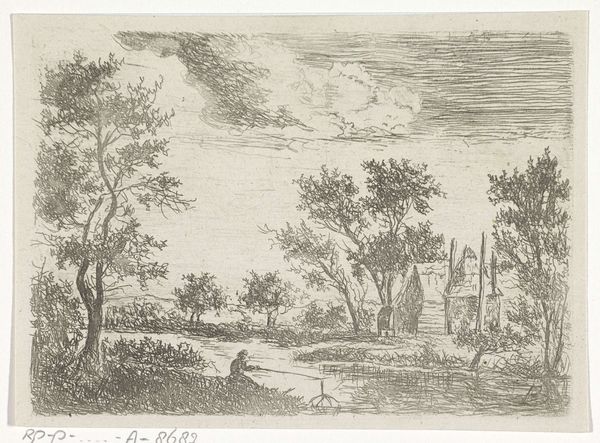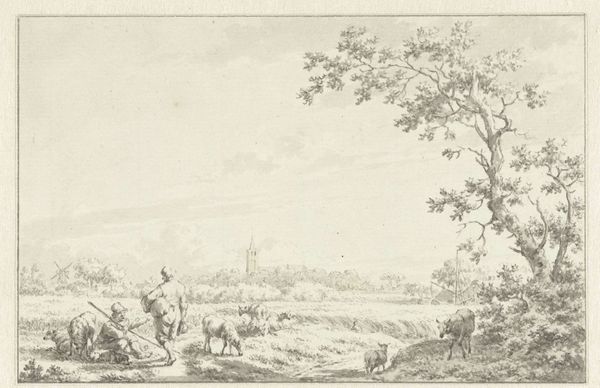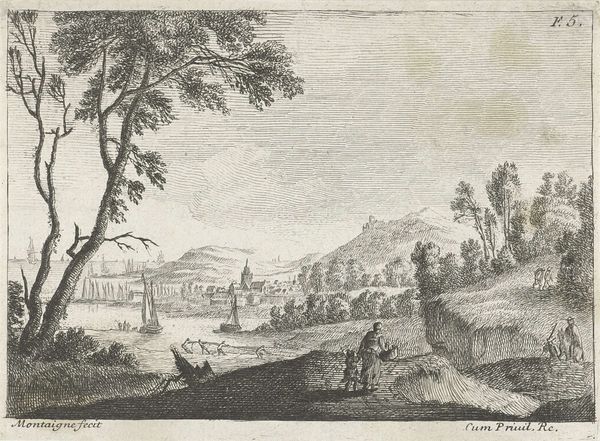
etching
#
dutch-golden-age
#
etching
#
landscape
Dimensions: height 130 mm, width 208 mm
Copyright: Rijks Museum: Open Domain
Curator: This is Roelant Roghman’s "View of Abcoude," an etching likely created between 1643 and 1677, now held at the Rijksmuseum. What strikes you first? Editor: The light, or rather, the way the etching creates an illusion of light. Notice the contrast – the dense, dark foliage on the left against the open sky. Roghman uses line and space so elegantly. Curator: Indeed. Etchings like this were widely reproduced and distributed. We should consider them as a commodity for a growing merchant class who consumed imagery, including landscape scenes reflecting their world and aspirations. Editor: The etched lines themselves – look at their variation in thickness and density. See how they define form, creating shadows and depth. He masterfully utilizes hatching techniques and the white of the paper to convey volume. Curator: Absolutely. The labour involved in producing such multiples is key here. While Roghman's name carries the artistic weight, numerous artisans, printers, and distributors played a vital role in creating, and moreover, disseminating this image of Dutch life to local consumers. Editor: But that focus overlooks the compositional strategies at play. See how the receding lines of the water and the path draw the viewer’s eye toward the village and its prominent church steeple? The scale, too. Curator: That is where it becomes interesting for a viewer, because beyond simple representation, Roghman uses this scale and distribution to make visible the evolving dynamics of property, religion and authority embedded within these scenes. It reflects the shift in cultural priorities of 17th-century Holland. Editor: A lovely image; however you choose to approach it! Curator: I agree, considering how the work reflects the world around us deepens the engagement.
Comments
No comments
Be the first to comment and join the conversation on the ultimate creative platform.

